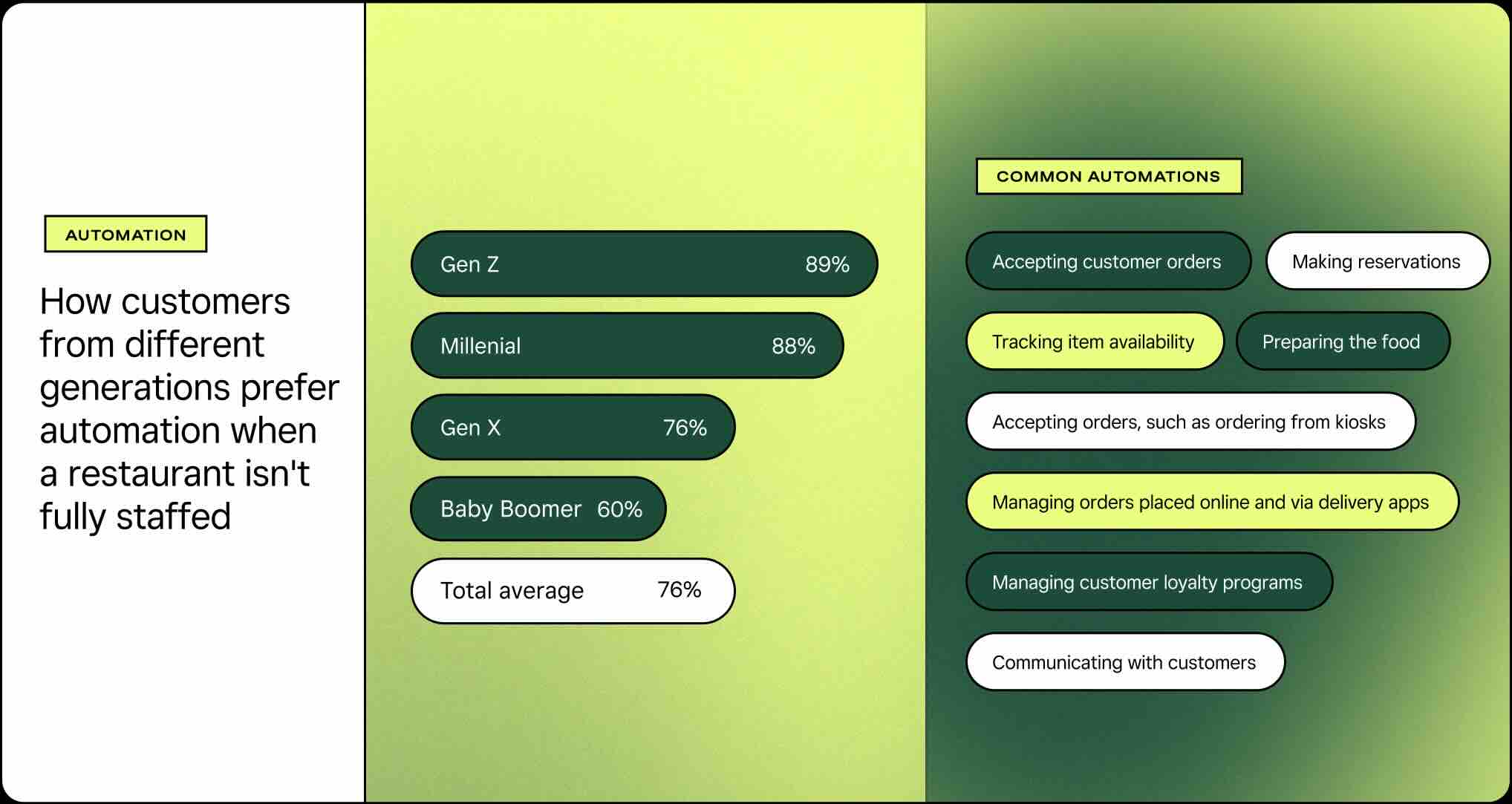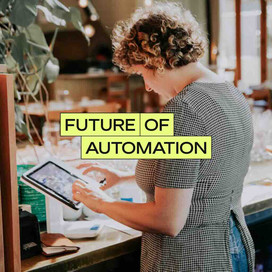Table of contents
A common misconception about automation is that it’s a replacement for human staff. Once an employee’s work is automated by technology, why keep that employee on the payroll?
Businesses across the globe, however, have proved this theory wrong. By implementing automation and technology in their workflows and processes, they’ve seen the opposite effect: improved business outcomes and increased employee retention and satisfaction.
Whether they’re automating tedious administrative tasks or taking a new, automated approach to marketing or communications, 100% of businesses surveyed by the Square 2024 Future of Commerce report said that automation has improved their business in some way. On top of that, 45% of retail owners said automation has improved their employee retention, and 43% of restaurant owners said automation has improved the employee experience overall.
So where are businesses leveraging automation to produce these results? According to Square Future of Automation data, this is how automation has made the biggest impact on the employee experience.
45%
of retail owners said automation has improved their employee retention.
Payroll
Payroll and benefits are the number-one area that retail businesses have automated to decrease their employees’ hands-on time. Thirty-nine percent of retail businesses reported automating their payroll and benefits, but this number jumps to 42% for businesses that earn $500,000 or more in revenue a year.
Automated payroll both frees up employee time and means employees get paid on time, every time. But some automated payroll systems can do even more — like generate W-2s and 1099s, file state and federal taxes, and even track sick leave and paid time off.
43%
of restaurant owners said automation has improved the employee experience.
Orders and inventory
Accepting orders, managing invoices, and tracking specific items rank next on the list of processes that businesses have automated to save employee time. Retailers reported order tracking (38%), invoicing (38%), and inventory management (37%) as three of the top areas they’ve automated to decrease staff hands-on time, while restaurants reported accepting customer orders (36%), managing orders placed through multiple channels (35%), and tracking item availability in real-time (34%) as their top automation priorities.
As more businesses accept orders from multiple channels, like social media or third-party delivery apps, efficiently managing and tracking orders and products is more important than ever. Time saved through automated order tracking, invoicing, and inventory management means staff can focus on more important parts of the business that fuel growth, not just the admin tasks that keep operations running.
We’ve reduced administrative time by more than 50% per day, with time-savings coming in the form of time spent on purchase orders, inventory, time sheets, shift scheduling, and getting reports for accounting. ”
Morag Cumming → owner, Biltong Emporium
Customer communication and marketing
Businesses are automating customer-facing operations, especially those that are repetitive but don’t necessarily require a human to manage, like sending marketing emails or taking reservations.
Thirty-eight percent of retail businesses have automated their communication with customers, and 36% have automated their email marketing programs specifically. Thirty-three percent of restaurants have automated their customer communications, and 30% have automated the reservation-making process.
Removing admin tasks like these from the employee workload can mean more face-to-face time with customers, helping improve the employee and customer experience overall. Keba Konte, owner of Red Bay Coffee, has been adopting automation across his business locations over the last year to speed up processes. “But it’s always going to be crucial for someone to be there for customer service and support,” Konte said. “Now we get to free up the barista to really engage with the customers.”
Our automated marketing program is effective at bringing back lapsed customers. There’s someone who might not have shopped with us for a little bit; we offer an incentive, they come back and discover a whole bunch of new products and become regular shoppers again. ”
Mat Pond → co-owner, The Epicurean Trader
Loyalty programs
Loyalty programs are one of the most effective tools businesses have to keep customers coming back, but they can be nuanced and time-consuming for employees to manage manually. That’s why 36% of retail businesses and 35% of restaurant businesses have automated their customer loyalty programs and incentives.
Since loyalty programs can be both customized and automated, they’re a simple tool to run in the background and integrate across sales platforms. They’re also a great way to track customer spending and better understand sales and bestselling products. “As a business owner, I don’t want to think about anything else,” said Chai Saechao, owner of Plant Therapy, a small retail shop with only a handful of employees. “The loyalty program runs on its own.”
Customer expectations
Customers are more interested in automation at local businesses than business owners might expect, especially where it speeds up processes and improves customer service overall. Sixty-seven percent of retail customers prefer that businesses use automation over live staff in at least one area, particularly for inventory information (42%), ordering or checkout (41%), or arranging pickup or delivery (38%).
An even higher 76% of customers prefer that restaurants use automation over live staff in at least one area, especially when they’re not at full staffing capacity. Accepting payments (37%), making reservations (35%), and tracking item availability in real time (28%) are the top areas whwere restaurant customers want automation.

Amid staffing shortages and increased competition, businesses are already taking steps to automate many of the areas customers are interested in. And as younger consumers have the highest preference for business automation, there’s ample room for businesses to keep exploring ways to automate, free up staff time, and improve the employee and customer experience.
To learn more about the future of automation in business, read our full 2024 Future of Commerce report.
![]()













